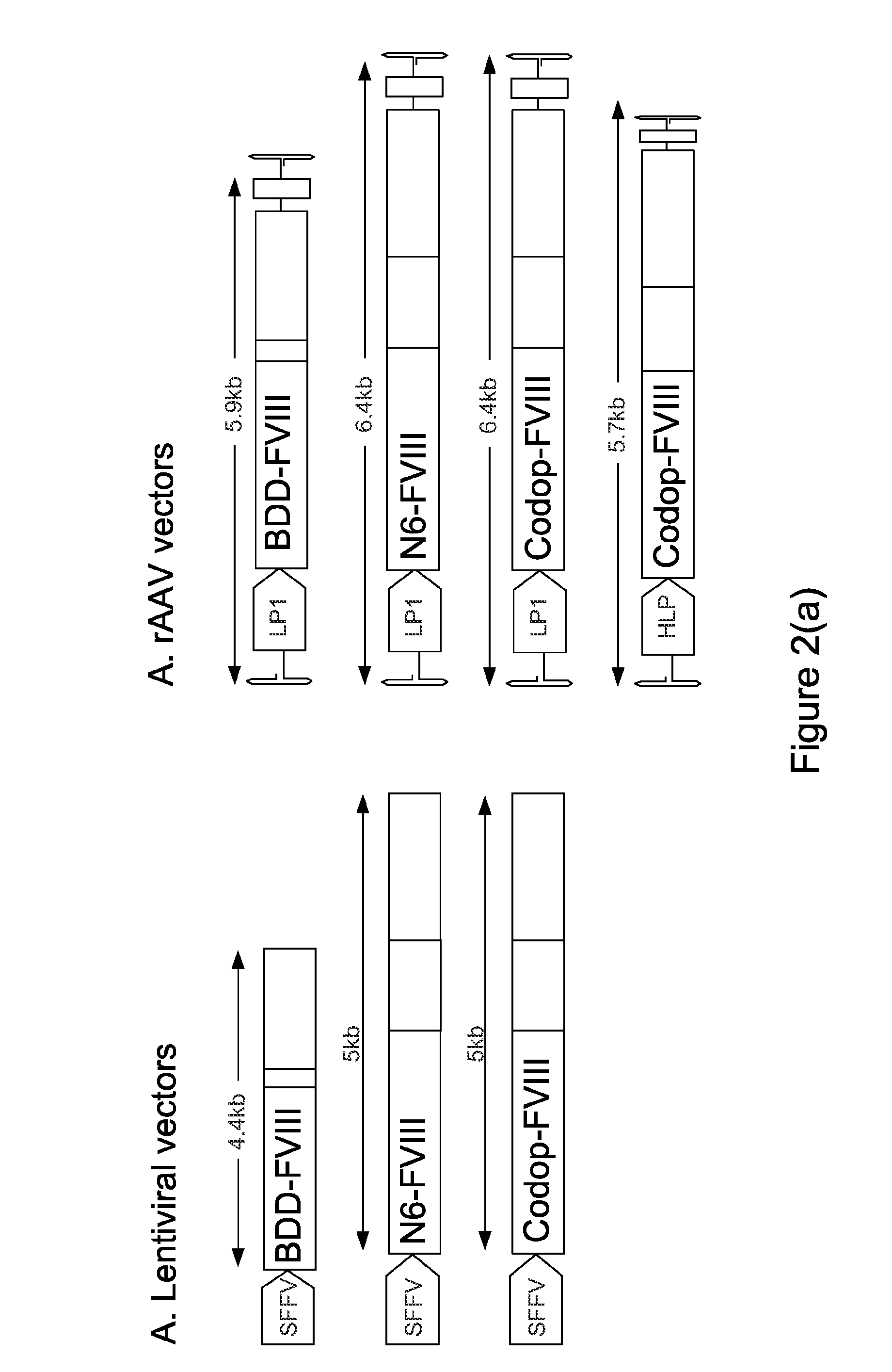Optimised coding sequence and promoter
a coding sequence and promoter technology, applied in the direction of viruses, drug compositions, dna/rna fragmentation, etc., can solve the problems of large size of hfviii cdna, high inefficiency of hfviii protein expression, permanent disability and occasionally death
- Summary
- Abstract
- Description
- Claims
- Application Information
AI Technical Summary
Benefits of technology
Problems solved by technology
Method used
Image
Examples
example 1
[0194]Packaging of an hFVIII Expression Cassette into rAAV
[0195]The inventors have established that a 6.0 kb expression cassette containing the BDD-FVIII cDNA under the control of the previously described liver specific promoter (LP1) can be efficiently packaged into rAAV vectors pseudotyped with serotype 5 capsid proteins (rAAV5-LP1-BDD-hFVIII) using the conventional 3 plasmid transient transfection method. Tail vein administration of only 2×109 rAAV5-LP1-BDD-hFVIII particles into adult male FVIIIKO mice resulted in FVIII coagulation activity of 18±5.3% using a chromogenic assay (FIG. 1), which is significantly above the level required for amelioration of the bleeding diathesis in humans (>1% of normal).
Scale-Up of rAAV-hFVIII Vector Production
[0196]The inventors have established a GMPP compatible, simple, scalable rAAV production method using the baculovirus expression vector and insect cells. A key advantage of the baculovirus system is the ease with which production can be scale...
example 2
Introduction
[0203]Hemophilia A is a serious bleeding disorder caused by a deficiency in, or complete absence of, the blood coagulation factor VIII (FVIII). It is the most common hereditary coagulation disorder with an incidence approaching around 1 in 5000 males1. The disorder is an attractive candidate for gene therapy because only a modest increase in FVIII plasma concentration is needed for therapeutic benefit, with levels of >1% able to achieve markedly reduced rates of spontaneous bleeding and long term arthropathy2. However, although preclinical results using gene therapy in animal models of hemophilia A have been encouraging, no approach as yet has been translated to clinical success where insufficient levels of FVIII expression have been observed3.
[0204]Low FVIII expression is principally caused by inefficient expression of the mRNA4-6, a significant proportion of protein misfolding with subsequent intracellular degradation, and inefficient transport of the primary translati...
PUM
| Property | Measurement | Unit |
|---|---|---|
| Fraction | aaaaa | aaaaa |
| Fraction | aaaaa | aaaaa |
| Volume | aaaaa | aaaaa |
Abstract
Description
Claims
Application Information
 Login to View More
Login to View More - R&D
- Intellectual Property
- Life Sciences
- Materials
- Tech Scout
- Unparalleled Data Quality
- Higher Quality Content
- 60% Fewer Hallucinations
Browse by: Latest US Patents, China's latest patents, Technical Efficacy Thesaurus, Application Domain, Technology Topic, Popular Technical Reports.
© 2025 PatSnap. All rights reserved.Legal|Privacy policy|Modern Slavery Act Transparency Statement|Sitemap|About US| Contact US: help@patsnap.com



